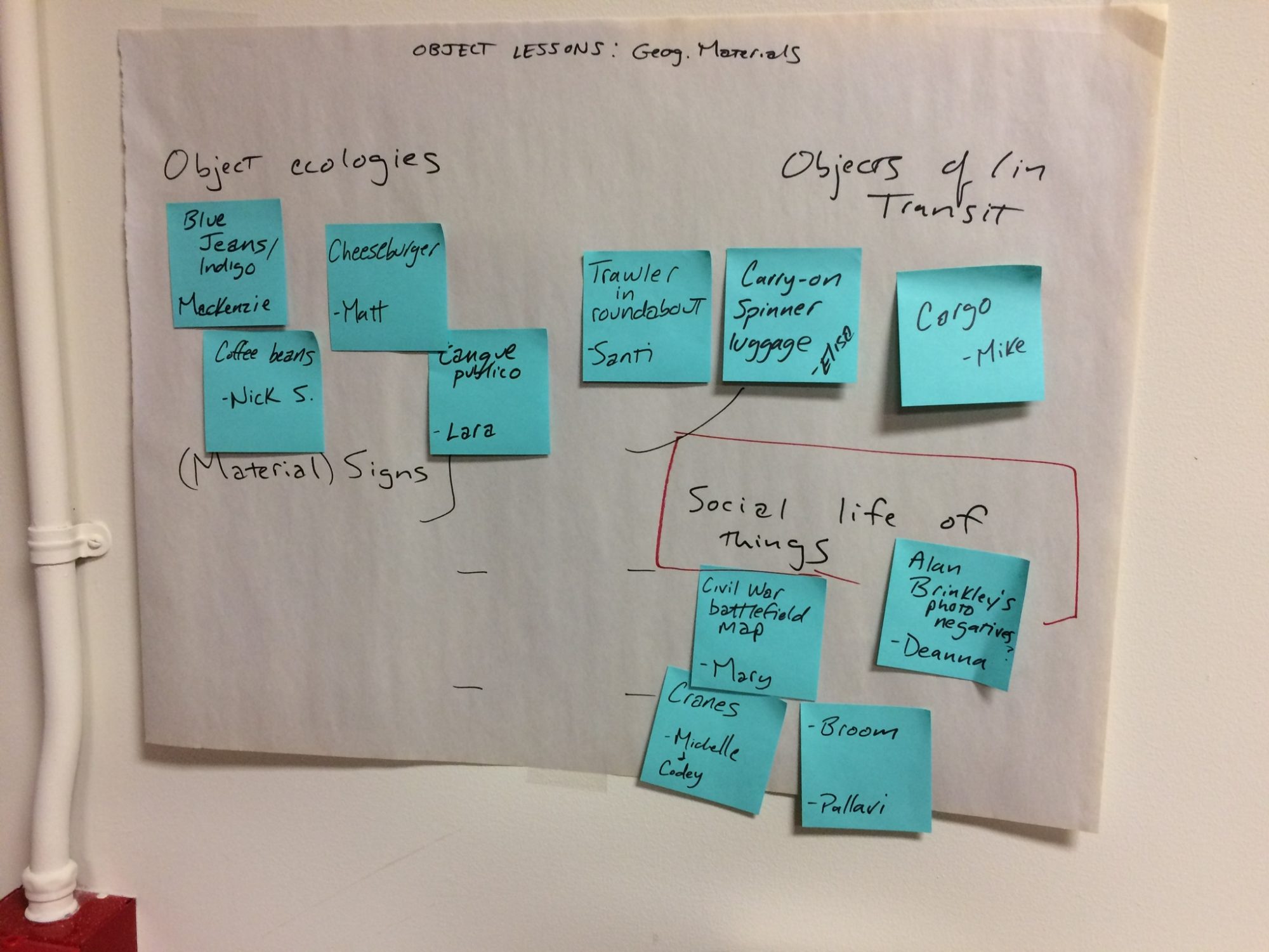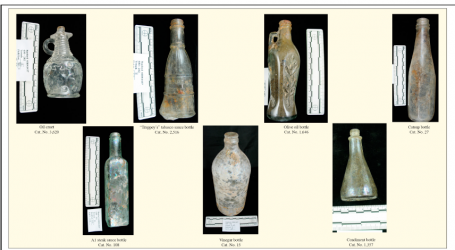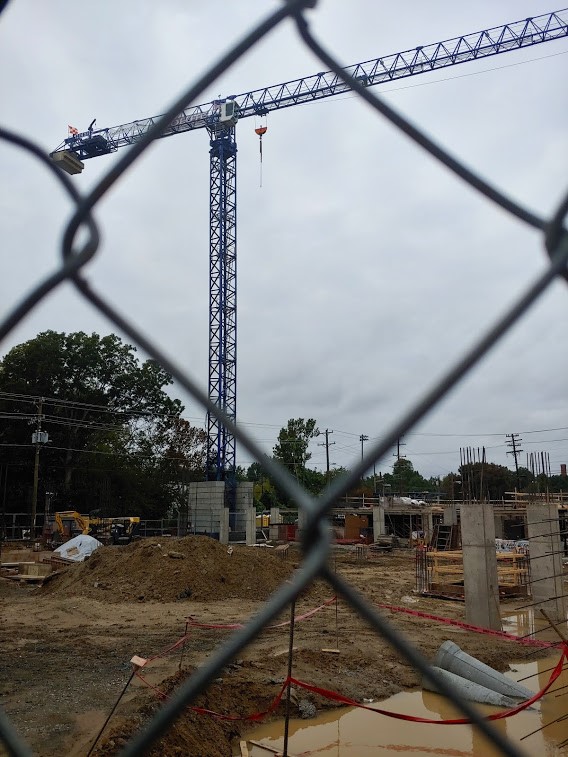In recent years Durham, North Carolina has experienced major changes. During Mayor Bill Bells sixteen-year long tenure the city, like others in the United States, pursued an economic development strategy centered on downtown development. On one hand, for the city government, such development would generate new tax revenue and economic growth for the city. As Patrick O’Young, Director of the Durham City/County Planning Department put it in April of 2017, “Durham is the middle of an unprecedented growth boom. You see the cranes everywhere. That’s adding tax base to our community. It’s adding residents and jobs and it’s a great thing.” On the other, citizens, policy makers, and activists voice concerns that this growth has had unintended consequences, especially for low to moderate income citizens. Promises of future growth exist uncomfortably alongside a city becoming unaffordable not only for those already marginalized, but also for more moderate income earners such as teachers. As a recent Atlantic article put it:
“look around at the trendy bars and coffee shops cropping up across downtown, the cranes and construction work on nearly every corner, and it’s a good guess that Durham’s affordability may soon be a thing of the past, just like the city’s status as a working-class, tobacco-manufacturing town.” (White 2016).
In this article, and in Durham more generally, cranes and construction work materialize the conflict between a vision of the future and its present consequences and anxieties. Durham’s current strategic plan frames the city’s steps into an imagined future by outlining five goals that serve “as a roadmap to make Durham a diverse, welcoming and innovative community” (City of Durham 2018, 1). As keywords of this document diversity and innovation are tied to a specific notion of development for the city’s sustainable future. An emphasis on data permeates the document and firmly links innovation and diversity. For Durham, innovative government organization is transparent, people-oriented and sustainable. Such transparency and sustainability is constructed through the implementation of data tools that would improve the city government’s internal processes and help foster the development of programs and initiatives that would “identify internal structure and implementation framework for the City’s racial equity program” (City of Durham 2018, 5). The strategic plan asserts the power of innovative development techniques and processes to protect and encourage diversity (City of Durham 2018, 13).
Situated in this discursive landscape, the material object of the crane indexes a conflict over the balance between the potentials for equitability and prosperity. When situated in a material site, the crane signals potential futurities, and projects its own sight or vision upon the areas around it. A particular crane, overlooking Durham’s Central Park directs us towards these issues (Figure 1). This crane is owned by Heede Southeast, a rental company that was the first to offer erection, dismantling, parts, service, and freight to its customers (Heede Southeast 2018). The crane is matter that renders other matter (bricks, steel, wood) active to form them into material places and spaces over time.
The crane arrived at the site through a series of economic relationships. The Heede Southeast crane is being used by Resolute building company to construct Foster on the Park, a luxury apartment. The land upon which the crane sits is owned by Blue Heron Asset management, a Raleigh based multi-family developer active in the US Southeast. We draw attention to these relationships to show that as an empty aesthetic figure the crane collapses the actually existing relationships which lift our anxieties and desires about the future.
As material evidence of the transition between the absence of a pit and the presence of a building, the crane looms over such events. Its rigid unnaturally blue metal beams contrast starkly with the gray sky and the crowd of people (and dogs) milling about (Figure 2). This contrast of the crane against life in Durham parallels the friction between the future and the present. As a signifier of the future–an empty future– the crane can disappear into the background of everyday life; at the same time, the crane and the future can always be marshaled again for varied purposes.
The vision laid out in in city’s strategic plan permits the crane on Foster. The crane embodies and implements the future vision embedded in the plan. At this site there are tensions between the city’s plans for the future and the permission granted to the construction companies that brought the crane to its site. Temporally, the crane activates matter, building up. Rising buildings signify a rising Durham that, taken with the context of the strategic plan, should be progressive, inclusive, diverse, and data-driven. But standing across from the crane, one can see the Liberty Warehouse apartments in the background (Figure 3). At this development, apartment prices range from $1,346 per month for the cheapest one bedroom to $4, 815 per month for the most expensive two bedroom. In Durham county the 2012 -2016 median household income was $55, 322, which means that the average household in Durham, made up of roughly 3 people1 should be paying no more than $1, 536 per month for rent2 (US Census Bureau 2018). It’s easy to imagine that these apartments, and the ones that will be developed by the Foster Crane, are out of reach for the majority of Durhamites. Visually, the crane collects this juxtaposition as a conflict between visions of the city—as a figure that represents a future in development, it can gather hopes for a more equitable future at the same time as it signifies an unequitable present. As an object of development regimes, the crane—this crane—frames and points us to tensions between capitalist development and desires for diversity and inclusivity. By revealing the relationships between building sites and the powers that make them happen the crane allows us to interrogate how exactly growth materializes in the city, and who this growth is for.
-Codey Bills and Michelle Padley
Notes
(1) Exactly 2.65 individuals per household from 2012 - 2016 (US Census Bureau 2018) (2) This is based on the federal standard of affordability, which is that no more than one - third of a household’s income should be spent on housing.
Citations:
Blue Heron Asset Management. 2018. “About.” Blue Heron Asset Management. 2018. http://blueheronassetmanagement.com/info/. City of Durham. 2018. “City of Durham Stratgic Plan: FY 2019 - 2021.” 2018. https://durhamnc.gov/DocumentCenter/View/22085/FY19-Strategic-Plan. City of Durham NC. 2017. CityLife: Development Services Center. Durham, NC. https://www.youtube.com/watch?time_continue=2&v=MScFLrI2xeA. Coole, Diana H., and Samantha Frost, eds. 2010. New Materialisms: Ontology, Agency, and Politics. Durham [NC] ; London: Duke University Press. Heede Southeast. 2018. “About Us.” Heede Southeast (blog). 2018. http://www.heedesoutheast.com/about/. US Census Bureau. 2018. “U.S. Census Bureau QuickFacts: UNITED STATES.” 2018. https://www.census.gov/quickfacts/fact/table/US/PST045217#PST045217. White, Gillian B. 2016. “The Downside of Durham’s Rebirth.” The Atlantic. 2016. https://www.theatlantic.com/business/archive/2016/03/the-downside-of-durhams-rebirth/476277/.


